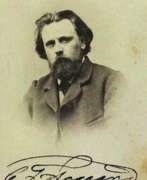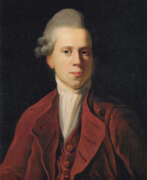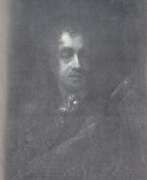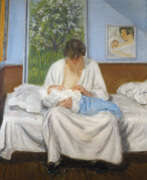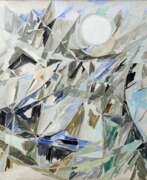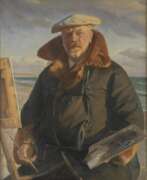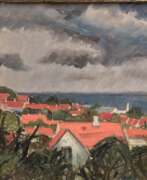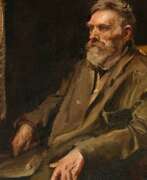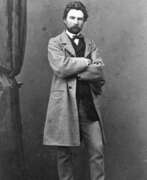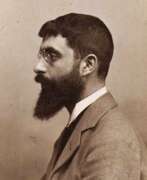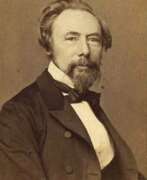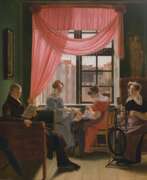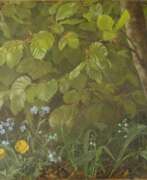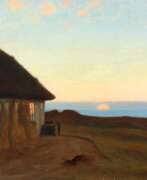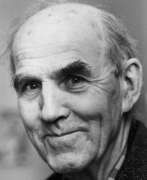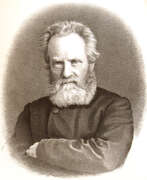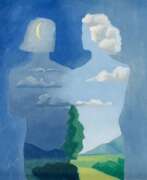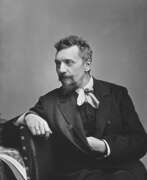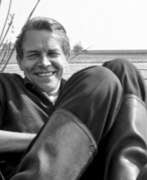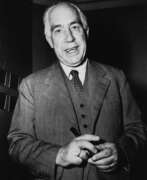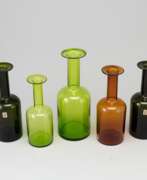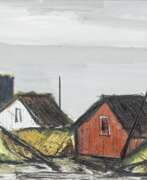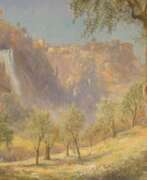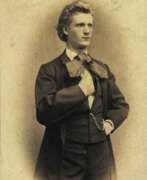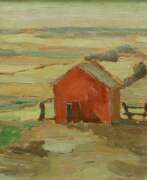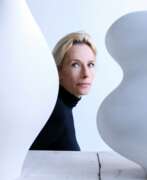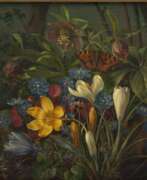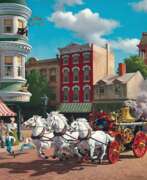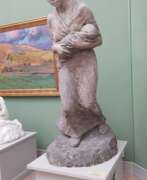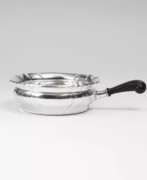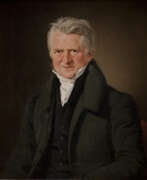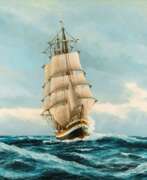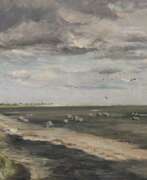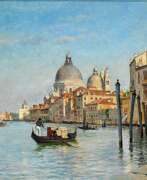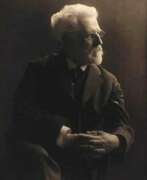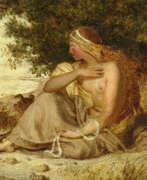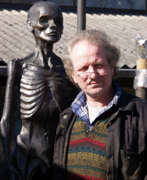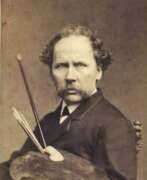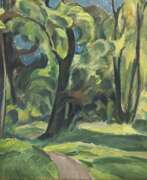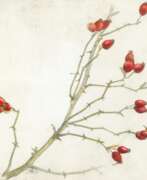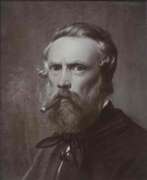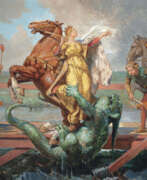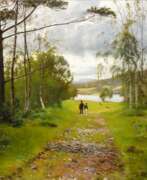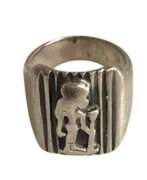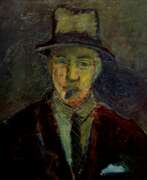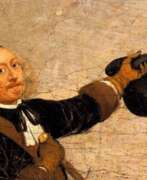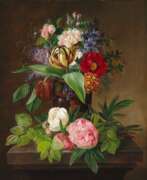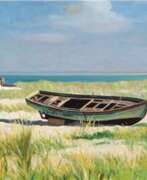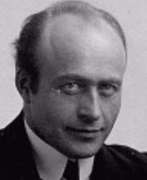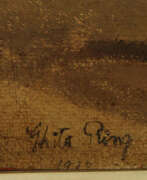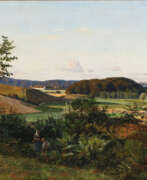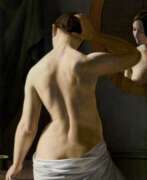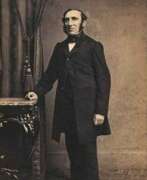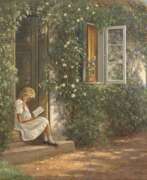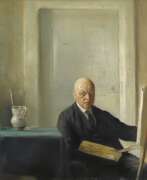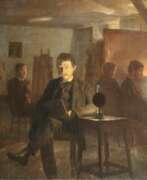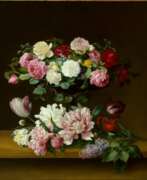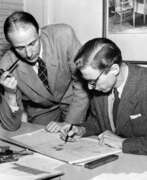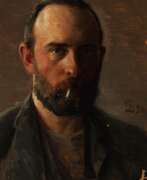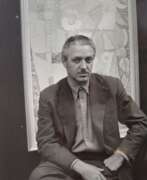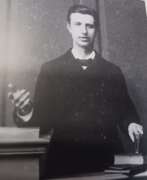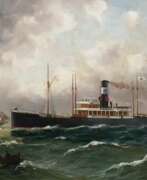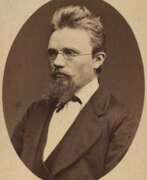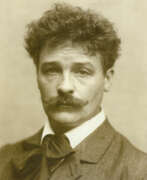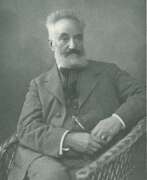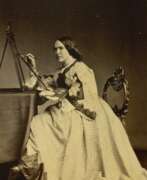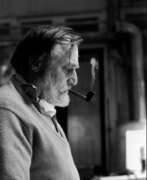Denmark
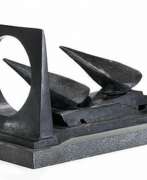

Jan Leth Aagensen was a Danish artist. He made his name as a lithographer and later became known for his sculptures.
Jan Leth's formal training took place at the Royal Danish Academy of Fine Arts under Professor Søren Hjort Nielsen from 1965 to 1969. His first exhibition took place in 1961 at Kunstnernes Forårudstilling (Spring Artists' Exhibition). He is a member of various art groups: Decembristerne, Kunstnersamfundet og Foreningen Danske Grafikere, the Association of the Royal Danish Academy of Fine Arts and the Association of Danish Painters Engravers.
Jan Leth has participated in various solo and group exhibitions, presenting paintings, sculptures, drawings, and installations in Denmark and abroad. He has received many honours and grants throughout his life. The Danish State gave him a lifelong economic grant in 1998. His work is represented in gallery collections in Denmark and internationally.
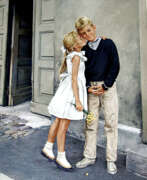

Kurt Ard was a Danish illustrator, painter and printmaker. He became internationally famous for his narrative cover artwork published in popular magazines of the 1950s-1970s, including the Family Journal, the Saturday Evening Post and Reader’s Digest. Ard started his career at various smaller newspapers and worked in the same realistic tradition as his role model, illustrator and painter, Norman Rockwell. During WW II, Kurt struggled to fulfill commission orders. His painting and his reputation and success grew steadily in the post war years. His illustrations soon appeared in major European publications, and he subsequently achieved international fame. Over the course of his career, Ard has sold more than 1000 illustrations to the best magazines in Europe, and to American publications such as McCalls, Good Housekeeping and Redbook. Today, Kurt continues to create exceptional figurative, landscape and seascape paintings with uncompromising authenticity , capturing the charm, beauty and power of these diverse subjects. His work is especially notable for its brilliant light and precise detail.
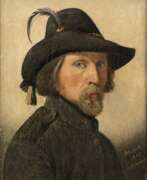

Detlev Conrad Blunck was a German-Danish painter of the first half of the 19th century. He is known as a painter and graphic artist.
Detlev Blunck at the beginning of his career specialized mainly in historical painting, then he moved to the domestic genre and joined the ranks of the masters of domestic realism. Later Blunck devoted his work to religious motifs and developed his own style of painting, which strongly reflected the influence of the Nazarene movement, the German Romantic painters.


Tycho Brahe, born Tyge Ottesen Brahe, more commonly called Tycho, was a prominent Danish astronomer, astrologer, and alchemist of the Renaissance.
As a young man he traveled extensively throughout Europe, studying in Wittenberg, Rostock, Basel, and Augsburg and acquiring mathematical and astronomical instruments. In 1572 Tycho unexpectedly even for himself discovered a new star in Cassiopeia, and the publication of this turned the young Dane into an astronomer of European reputation. For further astronomical research he established an observatory and gathered around him modern progressive scientists.
Besides practicing astronomy, Tycho was an artist, scientist, and craftsman, and everything he undertook or surrounded himself with had to be innovative and beautiful. He even founded a printing house to produce and bind his manuscripts in his own way, and he perfected sanitary ware for convenience. His development of astronomical instruments and his work in measuring and fixing the positions of the stars laid a solid foundation for future discoveries.
Tycho's observations - the most accurate possible before the invention of the telescope - included a comprehensive study of the solar system and the precise positions of more than 777 fixed stars. What Tycho accomplished using only his simple instruments and intellect remains a remarkable achievement of the Renaissance.
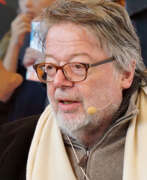

Peter Brandes is a Danish painter, sculptor, ceramic artist and photographer.
Brandes' art is abstract and often in brown colours. He had his breakthrough as artist in the beginning of the 1980s. He has, inter alia, done artwork on Roskilde Domkirke and mosaic (colored glass) windows in a church at Nordkap and the church Village of Hope, south of Los Angeles. In 1998, he created the enormous Roskilde Jars which stand outside the main Roskilde Railway Station.
Brandes is self-taught and his art circles around themes from Christianity. Ancient Greek mythology has also inspired his art. Brandes has illustrated a number of books, for example Homer’s Iliad. A great part of Brandes' ceramic works are inspired by ancient Greek art and mythology.
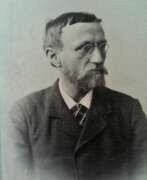

Hans Andersen Brendekilde, born Hans Andersen, was a Danish impressionist painter and representative of the Socialist Realist style.
Hans was a distant relative of the famous storyteller Hans Christian Andersen and also from a very poor family. However, his abilities were noticed, and he was admitted to the Royal Danish Academy of Fine Arts in Copenhagen, from which he graduated with honors, becoming a sculptor. However, Hans immediately began to paint, and depicted the harsh conditions of life in rural Denmark between 1880 and 1920. This was the beginning of the social realist style.
In 1884 he was living in Copenhagen with his friend, the painter Laurits Andersen Ring (1854-1933), at which time Hans took a second surname, Brendekilde, to avoid confusion.
Brendekilde was a committed socialist and produced many paintings depicting poor people working in the fields or in their homes at tragic moments in life. His most famous painting is The Weary One, which he completed in 1889. Through his work, Brendekilde had a great influence on many of his contemporaries, including Edvard Munch.
The talented and versatile artist also worked as an illustrator and gave a movement to arts and crafts in Denmark. Working for many years in the famous ceramics factory of Herman A. Koehler, he attracted other artists to this activity. And at the end of his life, the artist began to paint more positive pictures: flowers, playing children, fields under the sun.


Heinrich Christian August Buntzen was a Danish landscape painter.
His first showing was at an exhibition in Charlottenborg Palace in 1824 and, later, he won several prizes for his landscape paintings. During the 1830s, the academy purchased several of his works, as did the Royal Collection.
He was awarded the Order of the Dannebrog in 1877.
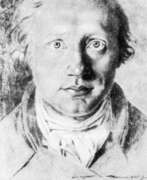

Asmus Jacob Carstens was a Danish-German painter of the late 18th century. He is known as a painter and draughtsman, a representative of classicism and romanticism.
Carstens produced famous narrative and historical paintings, including Plato's Symposium and The Battle of Rossbach, which brought him popularity. His famous huge painting The Fall of Angels, containing 200 figures, made him a professor at the Academy of Fine Arts in Berlin. Carstens preferred pencil, chalk and watercolor, and worked with fresco, rarely using oil. Most of his large-scale projects have been left unfinished or lost. Many of his surviving works exist as drawings.
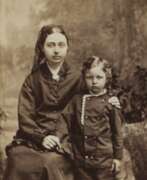

Anthonie Eleonore Christensen, better known as Anthonore Christensen, is a Danish floral artist.
Her first teachers were the painter-florist Emma Thomsen and then her mother, the painter Eleonora Tscherning (1817-1890), with whom Anthonore made a study trip to Germany, Italy, and Paris.
Anthonore Christensen's famous painting "Growing Anemones, Early Spring" was acquired by the Royal Collection of Paintings.
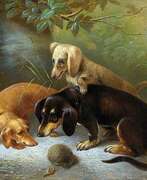

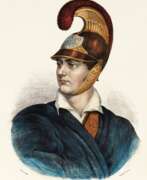

Adam Friedel or Adam Friedel von Friedelsburg was a Danish soldier and pirate, painter and actor.
Having the character of an adventurer, Friedel became a participant in the War of Liberation in Greece 1821-1829. He was granted the title of Baron Friedel von Friedelsburg, but the information about his aristocratic origin was found to be false and he was expelled from the Greek army. He was eventually forced to leave Greece for London, where his talents as an actor, musician, and painter became apparent.
In London, Adam Friedel opened his own lithographic studio. He became best known for his portraits of the heroes and leaders of the Greek Revolution, first produced between 1824 and 1826. The series of 24 portraits sold in large editions throughout Europe. He also created several famous portraits of Lord Byron.
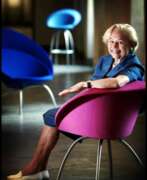

Nanna Ditzel was a Danish furniture designer.
She studied at the Danish School of Arts and Crafts and the Royal Danish Academy of Fine Arts in Copenhagen with painter Victor Isbrand, Orla Mølgaard-Nielsen, Peter Hvidt and Kaare Klint graduating in 1946. Her works include making cabinets, jewelry, tableware and textiles. She also made jewelry designs for Georg Jensen and furniture for Frederica.
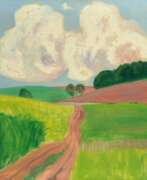

Kaj Ejstrup was a Danish artist, illustrator and sculptor. Above all, he is remembered for the landscapes he painted in the north west of Zealand as a member of the artists' colony known as the Odsherred Painters. In 1932, he was one of the founding members of the Corner artists association. Much of his work can be seen at Odsherreds Museum of Art.
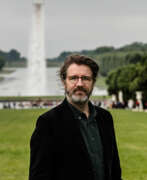

Olafur Eliasson is an Icelandic–Danish artist known for sculptured and large-scale installation art employing elemental materials such as light, water, and air temperature to enhance the viewer's experience. In 1995 he established Studio Olafur Eliasson in Berlin, a laboratory for spatial research. In 2014, Eliasson and his long-time collaborator, German architect Sebastian Behmann founded Studio Other Spaces, an office for architecture and art. Olafur represented Denmark at the 50th Venice Biennale in 2003 and later that year installed The Weather Project, which has been described as «a milestone in contemporary art», in the Turbine Hall of Tate Modern, London.
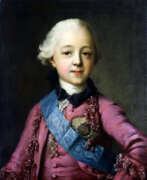

Vigilius Eriksen was a Danish portrait painter, celebrated for his deft representation of royalty during the 18th century. Born in Copenhagen on September 2, 1722, Eriksen gained early acclaim but faced setbacks such as being denied entry to the Royal Danish Academy of Fine Arts despite winning a gold medal there in 1755. His fortune changed when he moved to Russia, becoming a court painter to Empress Catherine the Great. This period marked his most prolific phase, where he created iconic portraits that were not only artistic accomplishments but also potent symbols of Catherine’s authority and persona.
Eriksen’s works, like the grandiose portrait of Catherine II, showcased his skill in integrating elements of power and status, a testament to his subject's dominion and the high baroque style he employed. This painting, noted for its detailed depiction of regal attire and insignia, is held in high regard not just for its artistry but also for the insights it offers into the royal iconography of the time.
After his successful stint in Russia, Eriksen returned to Denmark, where he continued to work extensively for the royal family, leaving behind a legacy that includes works housed in major Danish collections such as Rosenborg Castle.
For those interested in exploring the works of Vigilius Eriksen or staying updated on exhibitions and auctions featuring his art, signing up for updates could be a valuable resource. This subscription will keep you informed about new sales and significant events concerning Eriksen’s artworks.
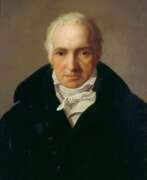

Janus Genelli was a German painter of the late 18th and early 19th centuries of Italian origin. He is known as a landscape painter and is considered a representative of classicism.
Genelli was famous for his idealistic depiction of nature, especially the Harz region and its mountains. From 1803, he became an art teacher to Queen Louise of Prussia and her son, Crown Prince Friedrich Wilhelm. Although Genelli's work is little known today, he was considered a genius in his day and his work was highly regarded by his contemporaries. His son Bonaventura Genelli also became a renowned painter and graphic artist.
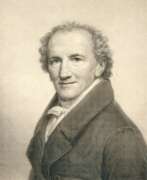

Friedrich Carl Gröger was a North German painter of the late 18th and first half of the 19th centuries. He is known as a painter and lithographer and is considered one of the most respected portrait painters of his time in Northern Germany.
Gröger was a self-taught artist. He began his career as a miniaturist, but soon began to specialize in portraiture, preferring chest-length portraits. His acquaintance with French artists during Gröger's stay in Paris inspired him to work with oil portraiture. He became known as a sought-after portraitist of the nobility of Schleswig-Holstein and painted a portrait of King Frederick VI of Denmark, which served as a model for coins and other portraits of members of the Danish royal family.
His works can be found in museums and private collections in Northern Germany and Denmark.
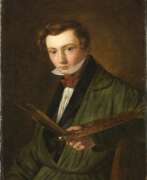

Heinrich Louis Theodor Gurlitt was a German and Danish painter of the second half of the 19th century. He is known as a Romantic landscape painter, a representative of the Hamburg and Düsseldorf schools.
Louis Gurlitt created canvases that are now part of the Royal Danish collection of paintings. Among his famous works are "Landscape near Salzburg", "Monte Pellegrino", "Ieranto Bay with Fishermen" and "Northern Italian Landscape". His works have been exhibited at the auctions "19th Century Painting" and "19th Century European Painting", and the painting "Norwegian Landscape" was sold in 2012 at Sotheby's London for $22,174.
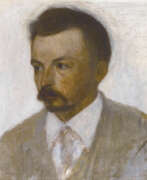

Vilhelm Hammershøi was a Danish painter of predominantly interiors, a representative of the Symbolist movement.
Vilhelm studied at the Royal Danish Academy of Fine Arts in Copenhagen, and a few years later at the 1889 World Exhibition in Paris, four of his paintings were exhibited in the Danish pavilion. Hammershøi was the last significant painter in nineteenth-century Danish art. He painted against a background of contemporary experience, but his painting never deviated from the basic rules of Danish Golden Age paintings.
At first his motifs alternated between figure and landscape painting, and later Hammershøi became truly an interior painter. Rooms became a constant source of subjects for him, and the walls and windows that form the boundary to the world almost literally became the backdrop for his paintings. People in his paintings, if present, then as silent statues, completely immersed in their thoughts. All his works, whether portraits, interiors or landscapes, are full of silence, peace and melancholy.
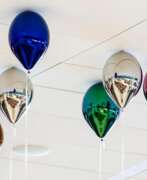

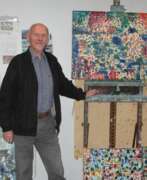

Zacharias Heinesen is a Faroese painter. He is the son of the writer and artist William Heinesen.
His works include oil paintings, watercolour paintings, drawings, woodcuts, lithographs and paper collages.
His paintings were featured on a series of stamps in June 2001.
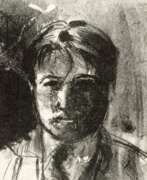

Søren Hjorth Nielsen was a Danish painter and illustrator. He is remembered for his paintings of the allotments and outskirts of Copenhagen and later for his landscapes of the Bramsnæs Vig area in northwestern Zealand. He was a professor of painting at the Royal Danish Academy of Fine Arts from 1957 to 1971.
His painting was essentially realistic, sometimes bordering on the grotesque. For a time he also worked as a portrait painter. His favourite subjects included the allotments and harbour districts of Copenhagen. His landscapes included summer scenes at Vester Åby on Funen and around Bramsnæs Vig on the west coast of Zealand; the houses and vegetation in the bottom half of the paintings contrasted with the stillness of the low-set horizon. In his later years, he painted a number of summer and winter scenes from his house at Tempelhuse to the south-east of Holbæk.
His work developed from Expressionism in his early years to participation in the renewal of Danish landscape painting. He was also active in etchings and woodcuts covering studies of models at the Academy, sketches during his travels or landscape depictions. He was also a keen draftsman, often producing crayon drawings as a basis for his oils.
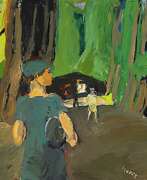

Erik Hoppe was a Danish painter who is remembered for his paintings from the Copenhagen area, especially those with young ladies in the park at Valby.
Hoppe also mastered the effects of light and colour. His earlier work is typified by greens and dull shades but later he produced compositions benefitting from bright sunlight. His style reflects the peculiarly Danish form of modernism, initially based on the sombre everyday-realism.


Hans Christian Hyllested was a Danish drawing artist and military man.
Hyllested served as a lieutenant in the Danish Army and later in Hamburg. In addition to his service, he was a skilled draftsman and depicted Danish soldiers and sailors in a variety of poses, singly or in groups, on foot or on horseback, often against colorful backgrounds. Particularly notable among these are depictions of the uniforms of colonial troops. Hyllested's drawings, as a set of 115 hand-colored lithographs, were published in The Complete Collection of Naval and Danish Uniforms (1829).


Antonio Nicolo Gasparo Jacobsen was a Danish-born American maritime artist known as the "Audubon of Steam Vessels".
The public rooms of The Griswold Inn in Essex, Connecticut, the oldest continuously run tavern in the United States, features the largest privately held collection of Jacobsen's paintings.
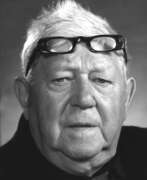

Robert Jacobsen, full name Robert Julius Tommy Jacobsen is a Danish painter and abstract sculptor. Jacobsen is a self-taught sculptor.
He became acquainted with modernist artists and created massive structures in granite and sandstone under the titles "Mythical Creatures", "Dolls". During his stay in France, his work included sculptures in cast iron.
Jacobsen was also a professor at the Munich Academy of Fine Arts and the Royal Danish Academy of Arts.
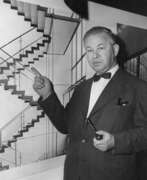

Arne Emil Jacobsen is a Danish architect and designer, the founder of the Danish Functionalism style.
He studied at the School of Architecture at the Royal Danish Academy of Fine Arts, and began working as an architect in the 1930s. Inspired by Art Nouveau, he designed several public buildings, including the Aarhus City Hall. In collaboration with Flemming Lassen, he first created a comprehensive overall interior design, including furniture, fixtures, plumbing and other details. After World War II, Arne Jacobsen made a name for himself both in Denmark and around the world.
For six decades, Arne Jacobsen was at the forefront of Danish architecture, creating visionary works of architecture that still look contemporary today. His projects often included both the building itself and the overall interior design as well as the design of the surrounding landscape. The combination of architecture and design is one of the constant characteristics of Arne Jacobsen's work. In projects such as the SAS Royal Hotel (1960) and St. Catherine's College in Oxford (1964), he not only created the architecture, but also designed every detail of the interiors, turning them into a true work of art.
In addition to architectural structures, Arne Jacobsen created a number of highly original chairs and other furniture. From his studio came avant-garde and innovative furniture, lamps, patterns, clocks, cutlery and glassware that are still in demand today.


Roman Osipovich Jakobson was a Russian-American linguist and literary theorist.
A pioneer of structural linguistics, Jakobson was one of the most celebrated and influential linguists of the twentieth century. With Nikolai Trubetzkoy, he developed revolutionary new techniques for the analysis of linguistic sound systems, in effect founding the modern discipline of phonology. Jakobson went on to extend similar principles and techniques to the study of other aspects of language such as syntax, morphology and semantics. He made numerous contributions to Slavic linguistics, most notably two studies of Russian case and an analysis of the categories of the Russian verb. Drawing on insights from C. S. Peirce's semiotics, as well as from communication theory and cybernetics, he proposed methods for the investigation of poetry, music, the visual arts, and cinema.
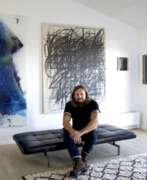

Sergej Jensen is a contemporary Danish artist, known for his sparse paintings that highlight the formal intricacies of a painting’s structure. Through muted hues and eclectic mark-making, Jensen probes the subtly of materials. His work is perhaps best understood in the context of other Minimalist painters like Michael Krebber, Robert Ryman, and Blinky Palermo. Jensen has described his practice as "Painting without paint." His surfaces and materials are handled in a manner that the most delicate scrubbed and patinated areas act as expressive marks.
Sergej Jensen’s work draws on a wide range of materials and formal references. Primarily known for his textile works, his lyrical compositions incorporate a variety of fabrics, from burlap and linen to silk and wool.


